Research Highlights
Research Highlights
A selection of highlights culled from publications by HAO staff.
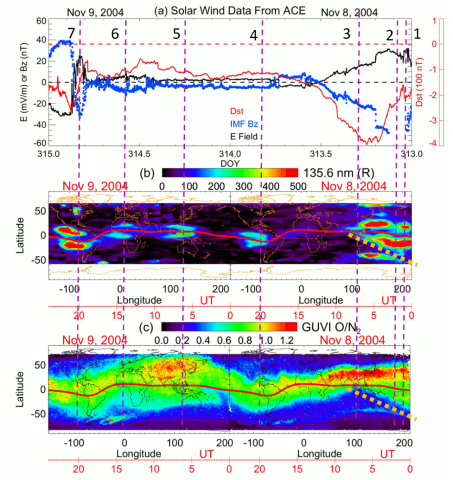
FUV Observations of Variations in Thermospheric Composition and Topside Ionospheric Density During the November 2004 Magnetic Superstorm
Y. Zhang, L. Paxton, C. Huang, and W. Wang, observe that the 135.6 nm radiances clearly showed a signature of ionospheric equatorial arcs and their variations during the November 2004 magnetic superstorm. When an intense eastward Interplanetary Electric Field (IEF) occurred, the dayside equatorial arcs were enhanced and their latitude separation increased.
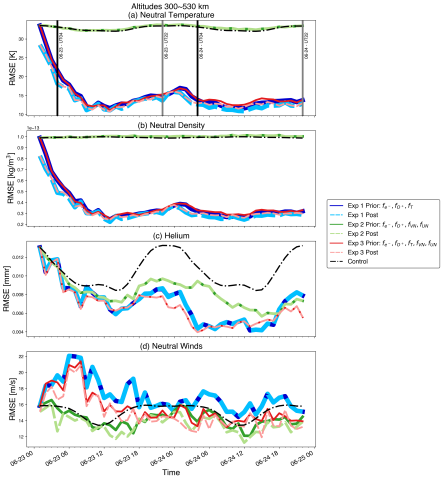
Specifying Satellite Drag Through Coupled Thermosphere-Ionosphere Data Assimilation of Radio Occultation Electron Density Profiles Publication: Space Weather
Nicholas Dietrich, Tomoko Matsuo, Chih-Ting Hsu for the first time, successfully estimate helium compositions with plasma observations, where helium has virtually no observations and becomes dominant at high altitudes. Their study further develops the potential use of a large and growing source of plasma data to predict the Earth orbital environment.
![Simulations of hemispherically integrated Joule heating [GW] polewardd](/sites/default/files/styles/large/public/2022-10/Maute_IntegratedJouleHeating2020.png?itok=moYyZxbJ)
Magnetosphere-ionosphere coupling via prescribed field-aligned current simulated by the TIEGCM
A. Maute, A.D. Richmond, G. Lu, D. Knipp, Y. Shi, B. Anderson assert that the magnetosphere-ionosphere (MI) coupling is crucial in modeling the thermosphere-ionosphere (TI) response to geomagnetic activity. They introduce a new method using observed FAC and solve for the interhemispherically asymmetric electric potential distribution.
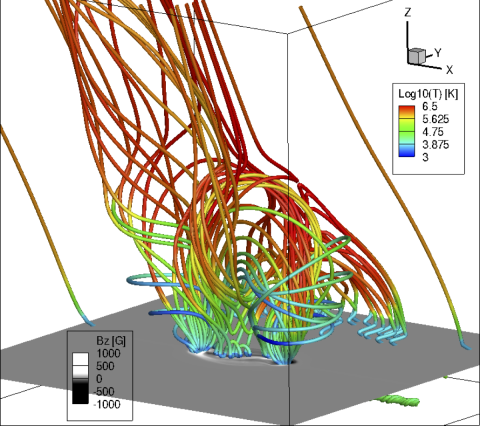
Validation of the PDFI SS method for electric field inversions using magnetic flux emergence simulations
A.N. Afanasyev, M.D. Kazachenko, Y. Fan, G.H. Fisher, and B. Tremblay further validate the PDFI SS method, using approximately one–hour long MHD simulation data of magnetic flux emergence from the upper convection zone into the solar atmosphere. They reconstruct photo- spheric electric fields and calculate the Poynting flux, and compare those to the actual values from the simulations.
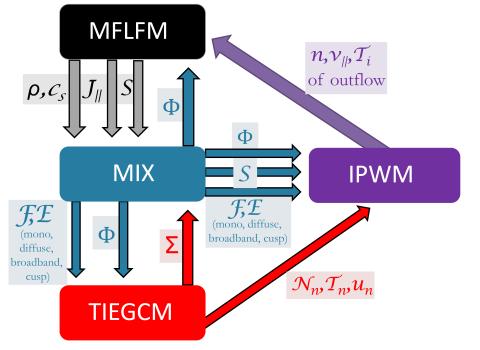
Thermospheric Impact on the Magnetosphere through Ionospheric Outflow
Kevin Pham, William Lotko, Roger Varney, Binzheng Zhang, Jing Liu have taken a key step in evaluating the importance of ionospheric outflows relative to electrodynamic coupling in the thermosphere’s impact on geospace dynamics. Their simulation results identify a variety of observed magnetospheric features that are attributable directly to the thermosphere’s material influence.
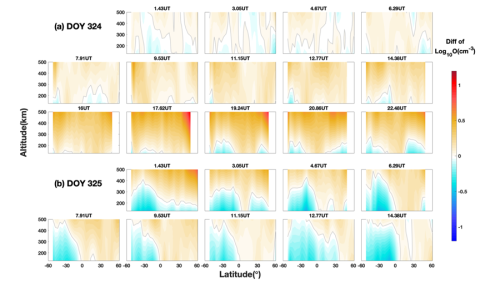
Neutral composition and temperature responses to the 20-21 November 2003 Superstorm from GUVI dayside limb measurements
Tingting Yu, Wenbin Wang, Zhipeng Ren, and Jia Yue use TIMED/GUVI limb measurements of FUV airglow emission to investigate thermospheric composition and temperature responses to the 20-21 November 2003 (day of year (DOY) 324 and 325) superstorm. The storm-time composition and temperature responses were global and evolved continuously as the storm progressed.
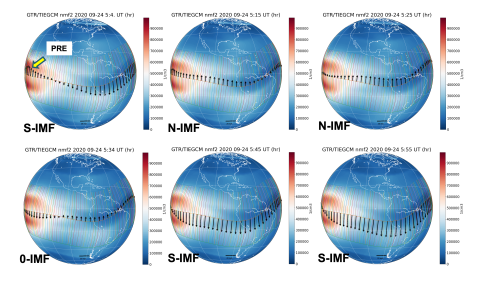
Penetrating Electric Field Simulated by the MAGE and Comparison with ICON Observation
Qian Wu, Wenbin Wang, Dong Lin, Chaosong Huang, and Yongliang Zhang use the newly developed, Multiscale Atmosphere-Geospace Environment (MAGE) model to simulate the penetrating electric field in the equatorial region under different interplanetary magnetic field (IMF) BZ conditions during September 2020.
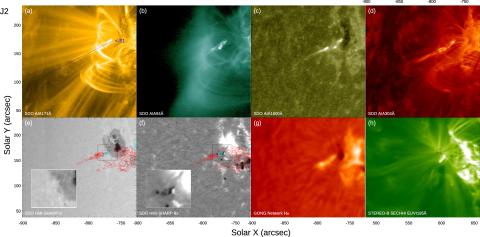
Thermal and Non-thermal Properties of Active Region Recurrent Coronal Jets Publication Name
Alin R. Paraschiv, Alina C. Donea, and Philip G. Judge present comprehensive observations of recurrent active region coronal jets, and derive their thermal and non-thermal properties. We discuss a peculiar penumbral magnetic reconnection site, which we previously identified as a "Coronal Geyser".
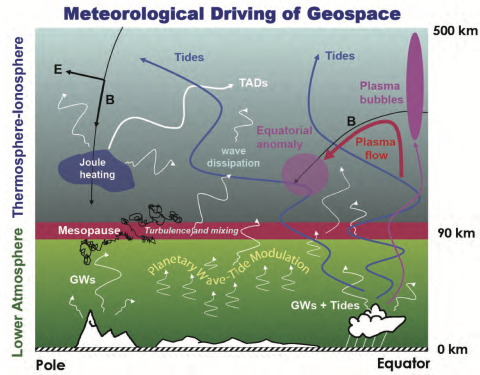
Scientific Motivations and Future Directions of Whole Atmosphere Modeling
Dr. Nick Pedatella asserts that the advancement of whole atmosphere models has contributed to understanding the significant role terrestrial weather has on generating variability in the ionosphere-thermosphere.